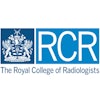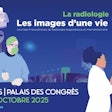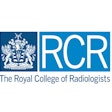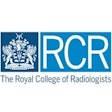
A total of 791 litigation claims involving radiology in the U.K. National Health Service (NHS) and covering a 20-year period have come under the microscope. Chest x-rays, CT, and mammography accounted for two-thirds of these claims.
The analysis by Dr. Oliver Hulson, a specialty registrar at Leeds Teaching Hospitals NHS Trust, and Dr. Jon Smith, a consultant radiologist with the same organization, was presented as an e-poster at last month's RSNA 2015 in Chicago. They noted that these four lessons must be learned from the research:
Ensure timely reporting of all imaging and that abnormalities requiring further investigation are referred appropriately, and make sure you document doing so. If clinical suspicion persists, despite negative imaging, ensure further investigation is planned.
Ensure local guidance regarding anticoagulation is adhered to, checking and documenting coagulation screen immediately preprocedure.
Ensure that consent is fully informed, with relevant discussion documented, signed, and dated.
Maintain vigilance regarding the transfer and care of patients in the department whilst on duty.
The authors used NHS litigation authority (NHSLA) data provided for claims against radiology to establish learning points in relation to these claims and to minimize potentially liable practice. They evaluated 791 settled claims against radiology between 1995 and 2014 provided by the NHSLA under the U.K. Freedom of Information Act. Claims were coded thematically and analysis of settlement, defense costs, and brief clinical details provided enlightening insight into successful claims.
There is typically a lag of three to five years between a claim being filed and settled. Despite this, 2014 has already seen a larger number of claims than any previous year, with the number of claims increasing year on year, although data from 2007 to 2010 are incomplete, as shown by the chart.
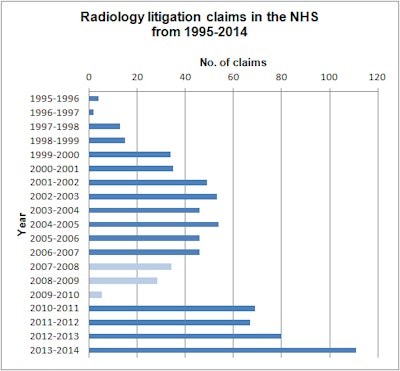 Data from 2007 to 2010 are incomplete. Source: Drs. Oliver Hulson and Jon Smith, Leeds Teaching Hospitals NHS Trust, Leeds U.K., presented at RSNA 2015.
Data from 2007 to 2010 are incomplete. Source: Drs. Oliver Hulson and Jon Smith, Leeds Teaching Hospitals NHS Trust, Leeds U.K., presented at RSNA 2015.Alleged missed, delayed, or incorrect diagnosis of tumor accounted for 174 (29%) of the settled claims. Chest x-rays accounted for 26% of these cases, while CT accounted for 25%, mammography for 15%, other plain film for 13%, MRI for 10%, barium enema for 8%, and ultrasound for 3%.
The total claim costs over the entire period were nearly 15.6 million pounds (20.4 million euros), with a mean claim of around 79,600 pounds (104,000 euros), and a range of 2,000 pounds (2,600 euros) to 1.69 million pounds (2.2 million euros). Overall, 136 claims were attributed to a delay in the diagnosis of cancer, but only 24 of these claims had a duration stated. The mean length of the delay was 113.4 days, with a range of 60 days to 2,190 days, according to Hulson and Smith.
A total of 75 (9.5%) claims related to an injury in the radiology department, and these claims totaled 1.42 million pounds (1.85 million euros) and had a mean of 16,544 pounds (21,484 euros), ranging from 500 pounds (649 euros) to 93,172 pounds (121,000 euros). Of these, 22 were due to a fall in the radiology room. Three claims were settled relating to patients undergoing MRI scans despite one patient having a pacemaker (total claim costs 4,116 pounds, 5,345 euros), another having an oxygen cylinder present between the legs (11,762 pounds, 15,274 euros), and another patient having not removed his hearing aids before the scan (1,200 pounds, 1,600 euros).
In all, 63 claims related to interventional radiology, totaling 4.27 million pounds (5.55 million euros). The mean claim was worth 63,110 pounds (82,000 euros), ranging from 1,500 pounds (2,100 euros) to 379,666 pounds (493,055 euros). Of these, 31 related to alleged substandard technique, 14 claims related to bleeding postprocedure (six of which related to anticoagulation), and eight claims related to an issue with consent for a procedure. The remaining claims were due to equipment failure, wire left in situ, wrong site surgery, and alleged inappropriate procedure.
Nine claims were settled due to extravasation of an intravenous (IV) contrast agent (mean claim 8,257 pounds (10,722 euros), ranging from 2,300 pounds (3,000 euros) to 18,750 pounds (24,349 euros). Two claims were settled due to contrast reactions leading to a fatality: barium enema contrast administered into vagina, leading to anaphylaxis (54,535 pounds, 70,822 euros); and "incorrect IV medication" given while undergoing a scan, leading to cardiac arrest (25,541 pounds, 33,168 euros).
Settled clinical negligence claims in 2003-2004 totaled 423 million pounds (553 million euros). Provisions for outstanding clinical negligence claims in the same year were more than 2 billion pounds (2.6 billion euros). Patient safety incidents cost the NHS an estimated 2 billion pounds a year in extra bed days, according to a report by the U.K. National Audit Office published in November 2005.
According to the authors, the limitations of the research were that only details of settled claims were available; clinical details are those provided by institutions; and radiology was cited as the responsible specialty only when a misdiagnosis was made or patient was mismanaged.


